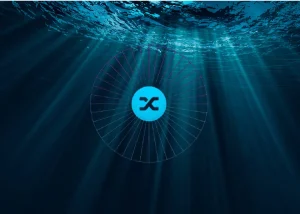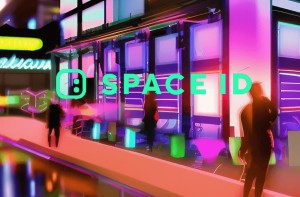The Decentralized Finance (DeFi) ecosystem has taken the world by storm. The rapid growth of this ecosystem has attracted the attention of everybody, including major organizations and governments. Although the latter was against the implementation of such technology in the current traditional systems, today there are many governments that are testing their own cryptocurrency projects. We also have El Salvador – the first government to make Bitcoin a legal tender.
The DeFi ecosystem is being built on Distributed Ledger Technologies (DLTs) such as the blockchain. Although blockchain technology has proven to be limitless and astonishing so far, there is still a lot of room for improvement in the DeFi ecosystem. This is because DeFi is still young and the creation of a healthy and effective ecosystem takes time.
However, there are different cryptocurrency projects continuously working towards improving this space. Moreover, most of these projects are providing unique approaches to each issue, bringing the world closer to the mass adoption of Web 3.0.
What is Web 3.0?
Web 3.0 today is being treated the same way as the Internet was being treated back in the 90s. However, just as the internet, Web 3.0 is inevitable. The internet has positively changed the way how every industry functions. Nevertheless, the internet as we know it is very limited. Through Web 3.0, these limitations will be surpassed and this technology might finally achieve its true potential.
When we talk about Web 3.0, it must be noted that blockchain technology will most probably play a huge role in how Web 3.0 develops. Web 3.0 essentially evolved from Web 2.0 which evolved from Web 1.0. This means that this is a cycle that repeats itself after a period of time. Web 3.0 is also known as the 3rd generation of the internet. Many see Web 3.0 as the place where the real world meets virtual reality. The four main properties of Web 3.0 are 3D Graphics, Semantic Web, Artificial Intelligence, and Connectivity.
The use cases for blockchain are never-ending. Because this technology is way faster, cheaper, and safer than traditional systems, most industries have seen the potential of implementing it into their day-to-day activities.
The use cases of Web 3.0 are even more vast than those of blockchain technology. This generation of internet services is going to connect the real world with the digital world more than ever, a feature which is worth mentioning too are NFTs which will change the way art is sold and presented on the internet. People will be able to live, work, and study using Web 3.0 just as they do in real life. Although people can study and work from their homes using Web 2.0 even today, Web 3.0 is going to give a totally different experience. Moreover, it will be part of the DeFi ecosystem and will help the progression of a decentralized value-driven economy. One cryptocurrency project that is working towards making this transition smoother for everyone is Forward Protocol.
What is Forward Protocol?
The ultimate goal of Forward Protocol is to accelerate the process of the mass implementation of blockchain technology. Forward Protocol targets three main sectors: Decentralized E-Commerce, Education, and Organizations. At the time, however, they are mainly focusing on building a platform for decentralized education. Their blockchain-based learning ecosystem aims to incentivize the transfer of information and knowledge through a decentralized reward system. With the use of Web 3.0, they aim to increase the level that experts have with learners on a global scale.
As they are just getting started, they aim to become the WordPress of Web 3.0. They provide prepared customizable smart contracts. This means that Forward Protocol lets you join this industry effortlessly and risk-free. Through this solution, organizations and whoever is interested in adopting such technology can do so in minutes. It must be noted that Forward Protocol will continue to be decentralized and independent from any influence.
The main elements of Forward Protocol are:
- The Forward Protocol Architecture
- The Forward Protocol Tokens
- The Forward Chain
The rewards will be given out as $FORWARD, the native utility token of the Forward Protocol. Additionally, to further improve their ecosystem, the Forward Protocol also has a stablecoin called Forward USD or $FUSD.
The Viability of Forward Protocol
But will the Forward Protocol be successful? Well, let us look at the statistics. Forward Protocol is targeting the decentralized value-driven economy. This sector is estimated to accumulate more than $397 billion in value over the next five years. Moreover, Forward Protocol is one of the first ones to provide such a solution. Since most of the traditional centralized markets are still not fond of blockchain adoption, Forward Protocol has a lot of room to grow. Not to mention their unique approach towards the value-driven economy sector.
As mentioned before, Forward Protocol is considered the WordPress for Web 3.0. This is because of several reasons, with the main one being the way it functions. On Web 2.0, WordPress makes the process of creating and publishing a website seem like a game where no programming and code is needed. This made it possible for everyone to launch and operate a website. The same will be done through Forward Protocol for Web 3.0. Through prepared smart contracts that can are entirely customizable, anyone can being the process of blockchain adoption without facing any risk.
The Forward Protocol uses an instant deployment model, making it efficient enough to provide large scale blockchain adoption in a short period of time. Most companies have yet to adopt to blockchain technology. Forward Protocol is trying to connect these companies with the Web 3.0 through its ready-to-go smart contracts and gasless transactions. Although very efficient, blockchain technology is complex. Forward Protocol is working on providing everyone with an opportunity to use already made applications just as they use Web 2.0 applications with no gas fees. After all, who would use Web 3.0 if they had to pay for every action taken?





